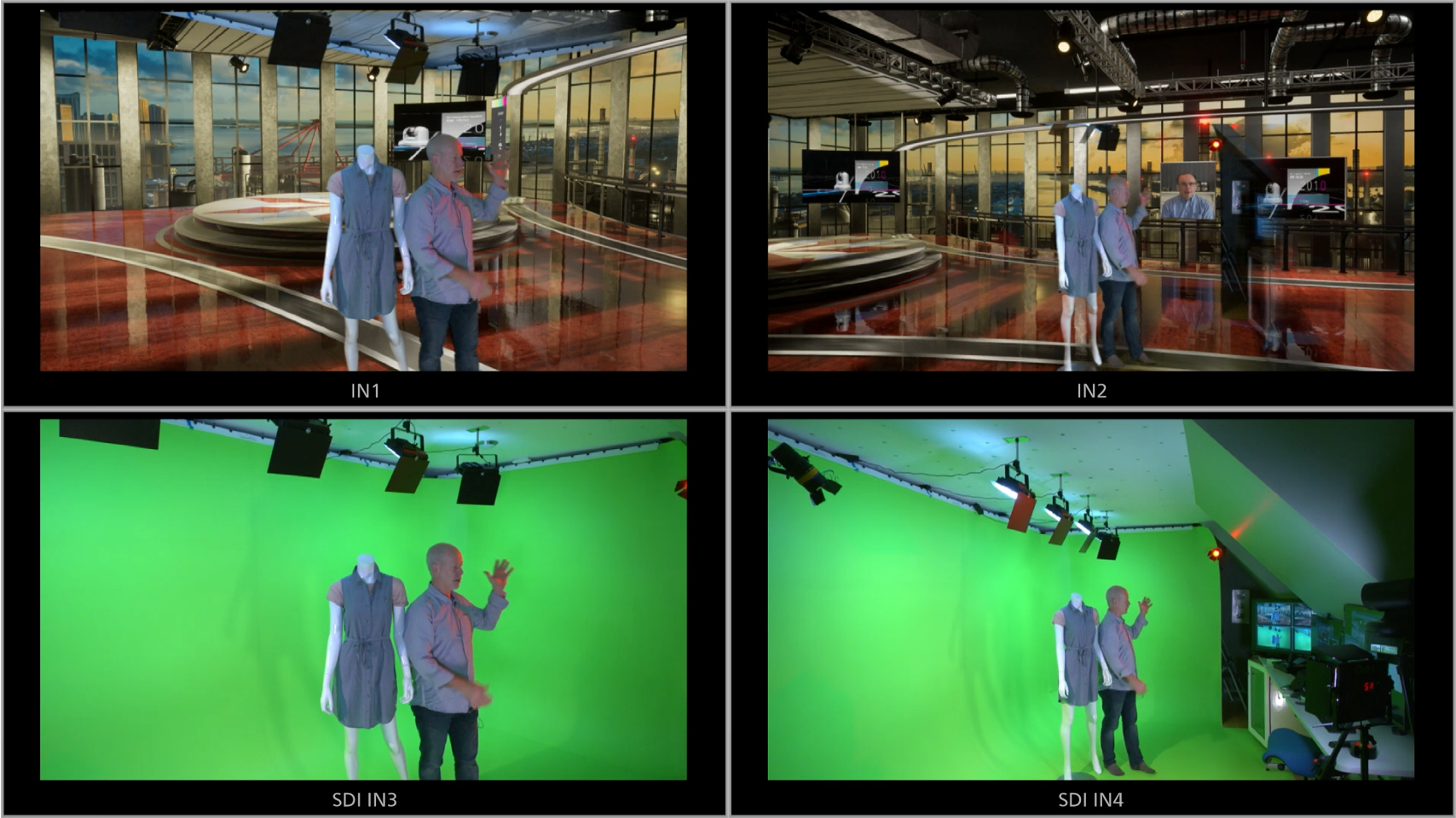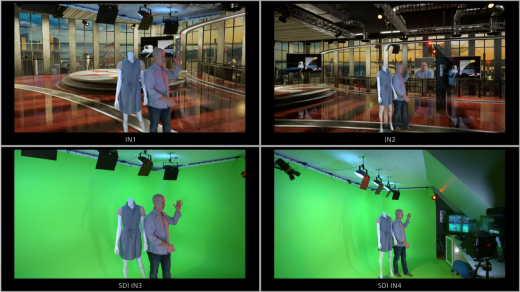Panasonic embraces hybrid events, shifts B2B strategy and targets BETAs
Electronics company is also finding that virtual events are producing more qualified leads.

As more B2B marketing teams adopt B2C strategies to engage and convert business customers, electronics giant Panasonic has found success in focusing on engaging customers where they are. And during the COVID-19, that includes virtual events.
“We’ve had to adjust, think as entrepreneurs and, as a company, look at how some of the other big brands have chosen to shift,” said Panasonic’s VP of Marketing Brian Rowley. “The ability to be agile is the way we approach the business and our marketing.”
Rowley is head of marketing for Panasonic’s systems solutions company, North America. This includes four business units: the mobility line of products (Toughbooks and related durable mobile devices); professional video and business systems (for amusement parks, exhibitions and other organizations); enterprise process innovation for manufacturing and food; and robotics and large factory equipment.
“When the pandemic started, we were only weeks away from one of the most important trade shows in our space, the NAB Show,” Rowley said. “When the pandemic hit, that show was impacted. We made the shift in our approach and used a virtual format.”
Panasonic teamed up with virtual production company DisruptAR to create a virtual event with augmented reality using the Panasonic AW-HE42 video camera and green screen technology. The event took place on Microsoft Teams.
Panasonic went on to host 33 virtual events in 2020, and with some uncertainty about the return of live events in the short term, they are embracing a hybrid approach.
“We took our [existing events] team and actually shifted to being a virtual production team,” said Rowley. “Some of the team that’s more vertically within the business shifted skills to support that events team.”
Panasonic didn’t have to reduce their marketing team or hire new members. To support the new hybrid events, they determined what the virtual assets were that would replace the print materials,” Rowley said.
His team is watching attendance rates closely and finding that virtual events are producing more qualified leads, in many cases.
“One of the things we can all agree on is those days of meeting a customer or prospect at a trade show or face to face, there’s been a shift. We’ve seen that change through the course of the year.”
Solving customer problems
Under Rowley, Panasonic’s approach to B2B marketing has shifted to a customer-centric strategy in the kinds of messages, channels and content that his team uses to spread the word about products and broader industry topics.
“The big shift for us has been the move from being hardware-centric to becoming solutions-based,” said Rowley. “I’d say we’re seeing a shift in the way in which we interact with customers and the conversations we’re having. No longer am I coming in to sell X. Instead, tell us what obstacles you have and we can solve that pain point. Instead of pre-thinking, we really want to understand where in the process you are, what efficiency you’re trying to achieve, and work to solve for that. Technology can answer all those questions.”
Panasonic used technology to help their client, Brooklyn Dumplings, to adapt their operations to become contactless in the midst of the pandemic. Their location in Manhattan’s East Village adopted new food lockers that open with a barcode that customers scan with their phone. The food is prepared and then kept heated or cooled at a fixed temperature in the food locker until the customer comes to the store and picks it up, without having to interact with any employees. The transaction, including ordering and payment, is all done digitally.
“This agility and fearlessness embodies the approaches we’re using,” Rowley said. “Everyone wanted to go contactless. At Brooklyn Dumplings, a customer just opens the locker, and this is taking dumplings to a new level, and delivering a whole new experience.”
He added, “Do I sacrifice freshness? No. Think of what this does to the whole concept of takeout and delivery services. During the pandemic there’s been a tremendous focus on takeout. As we return to more [in-person] interaction, there will still be people who want to do that.”
The food locker technology might even open the door for fine dining establishments that have been hit particularly hard during the pandemic, he said.
Listen and measure
In order to learn about the new problems customers face, Panasonic realized it had to listen more. And with more customer interactions happening over digital channels, analytics tools are crucial.
“In fairness, we had started some conversations with vendors about analytics (prior to the pandemic),” said Rowley. “We made a migration within our overall leads module that we work off of. We pushed that process and moved that to a much higher gear. We knew the value.”
Changes had to be made on-the-fly in order to optimize campaigns in 2020, and moving forward.
“We couldn’t wait for a campaign to end, and had to come as close to real-time as we could,” he explained. “We used more A/B testing to figure out how to respond best to customers.”
With better analytics, Panasonic is able to provide more insights into the customers they engage with and provide more customized communications and targeted messaging, Rowley said.
“From a sales mindset, a lot of it is in order to evaluate effectiveness of contact on actual touchpoints,” he said. “From a marketing perspective, we all have the responsibility for customer experience. Sales is much more focused on once the contact is established, making the most of that relationship going forward. Marketing sees as even more important those first impressions that establish who we are.”
He points out that customer interactions have evolved to the point where prospects have already spent a great deal of time on the company’s site before they take an action like speaking to a representative on the phone. This is why messaging has to be consistent.
“From there,” Rowley said, “how do you continue to evolve the conversation? We balance that with what we see from the industry as well, and do a lot of listening to conversations in the market.”
To boost social listening, Panasonic turned to the Quid line of tools from NetBase Quid. They also depend on Google Analytics and recently made the shift from Marketo to Salesforce Marketing Cloud.
In search of BETAs
Panasonic has a lot to be proud of in terms of the products they have in the marketplace, from new food technology solutions to the projectors that build entertainment experiences for amusement parks. But bragging about their tech this isn’t the best way to begin a conversation with customers.
“It’s about keeping the focus around values and beliefs, and understanding your audience is really critical more so now than in the past,” Rowley said. “We can rest on the fact that we’re a 100-year-old brand, but we need to listen to customers, design experiences that are engaging, and do something with the feedback and embrace, not just gather it. Then, utilize the experience to create a better customer experience.”
Who is the audience that Panasonic is trying to reach? Rowley has embraced a new psychographic group of younger professionals within the B2B landscape known as BETAs. They maintain blurred lines between work and personal life (that’s what the the “B” stands for), while embracing evolution (“E”) and technology (“T”), and also seeing themselves as activists (the “A”) with their colleagues and for bigger issues in society.
“Among this BETA group, 86% believe that thought leadership is the way to increase traffic with the organization,” said Rowley. “In the past year and half we’ve had a strong focus on this, that we’re not advertising for who we are, but give people an open view of what we’re doing in the market. The behavior trends that we see suggest that this is really important and worth educating current and prospective customers about.”
The Panasonic marketing team expanded content production through two podcast series to talk about larger issues in the industry and internally at the company. They also spent four months during the pandemic reviewing and refreshing their website by minimizing the click points to get the information customers were looking for, and using analytics to understand where they were spending the most time gathering information.
“We moved that information into the user experience because we understood that value was sitting in our property,” Rowley said. The focus now is on lower bounce rates and higher engagement on their web properties, which indicates interest and a likely sale.
The post Panasonic embraces hybrid events, shifts B2B strategy and targets BETAs appeared first on MarTech.
(23)



